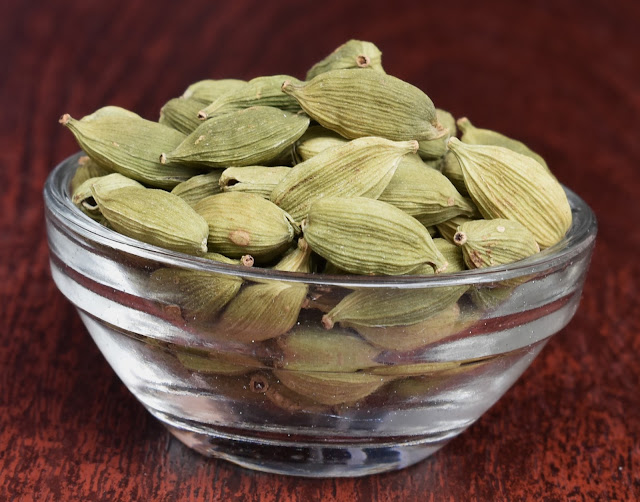Botanical name: Elettaria cardamomum
English names: Cardamom, Cardamon, Malabar cardamom, Ceylon cardamom, Lesser cardamom
Indian names: Elaichi, Chhoti elaichi (Hindi, Punjabi, Gujrati, Marathi, Urdu), Trutih (Sanskrit), Elatarri (Malayalam), Elam Ancha (Tamil), Elaki (Telugu)
Family: Zingiberaceae
Chromosome No: 2n = 48, 50, 52
Cardamom, also known as the Queen of Spices, is one of the most expensive (after vanilla and saffron) spices in the world. Commercially used parts are fruit and seeds. It is a spice of choice with large number of medicinal and culinary uses. There are two varieties of E. cardamomum i.e. E. cardamomum var. major (wild) and E. cardamomum var. minor (cultivated).
Origin and Distribution
Cardamom is a native to Kerala, Karnataka and the forests of the Western Ghats of Southwestern India. It is widely cultivated in India, Guatemala and Sri Lanka. Now, Guatemala is the largest producer and exporter of cardamom in the world, followed by India.
Morphology
Cardamom is a robust
perennial herb growing in thick clumps and reaching up to 3 m tall. A large
number of erect leafy shoots (composed of the leaf sheaths) arise from the
branched rhizomes. The flowering shoots also
arise from the rhizomes, but are decumbent. The leaves are distichous, with
sheathing bases and together form the pseudostem. The leaf blade is lanceolate,
25-100 cm × 5-15 cm in size and with acuminate apex. It is dark green and
glabrous above and light green and pubescent beneath. The inflorescence is a
prostrate panicle, up to 1.2 m long. The flowers are bisexual, zygomorphic, about
4 cm long with tubular and green calyx. The corolla is white with violet streaks,
tubular, 3-lobed and forms a labellum. Fruit is a subcylindrical, pale green and
trilocular capsule.
Chemical
Constituents
Cardamom fruits (dry)
contain 42 % carbohydrates, 10% proteins, 2% fat, , 20% fibre and 6% ash. The
seeds of freshly harvested cardamom may contain up to 11% essential oils. A number of potentially active ingredients
are found in the seeds. The most important of them are terpenes, flavonoids
and phenylpropanoids. Major consdtituents are α -terpinyl acetate
(24-49%), 1,8-cineole (24-38%), linalool (5-6%), linalyl
acetate (1-4%), β-pinene (6.2%), limonene (1-4%), eugenol and quercetin.
Uses
1.
As Spice: Cardamom
is extensively used for flavouring curries, teas and drinks.
2. Medicinal Uses: Many medicinal uses have been reported for cardamom. Cardamom
is reported to reduce chronic inflammation and boost antioxidant activity. It
lowers blood pressure and cholesterol level and improves the heart health.
Cardamom improves the liver function, helps in digestive issues and reduce gut
discomfort. It has antibacterial and antifungal activity. However, it may trigger a severe allergic reaction in
rare cases.
3.
Mouth Freshener:
Cardamom is an excellent mouth freshener.
4.
Flavouring of
Eatables: Many eatables are flavoured with
cardamom.
References
Thakur, A.K., Bassi, S.K. and Kango, N. 2018. Economic Botany and Biotechnology. S. Dinesh and Co. Ltd., Jalandhar, Punjab.






.JPG)





